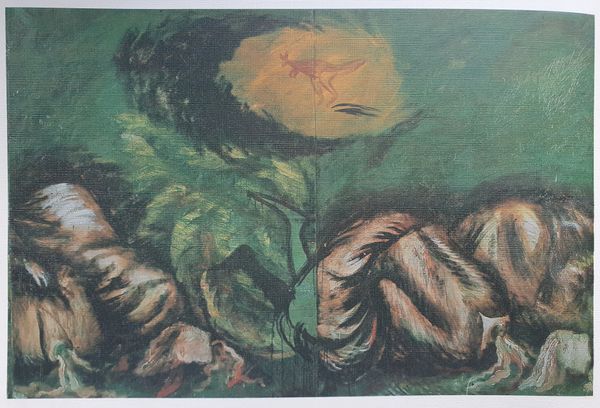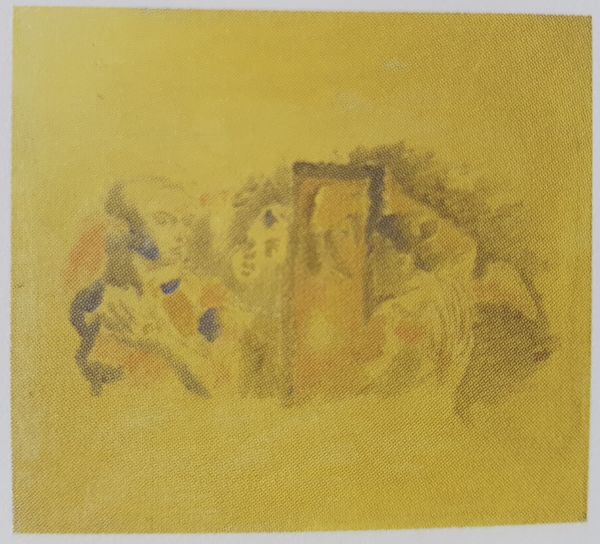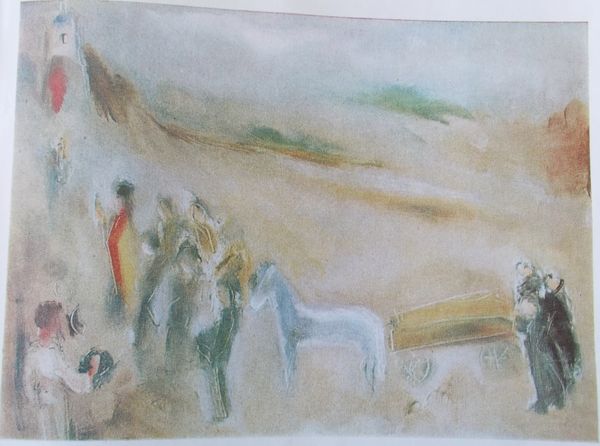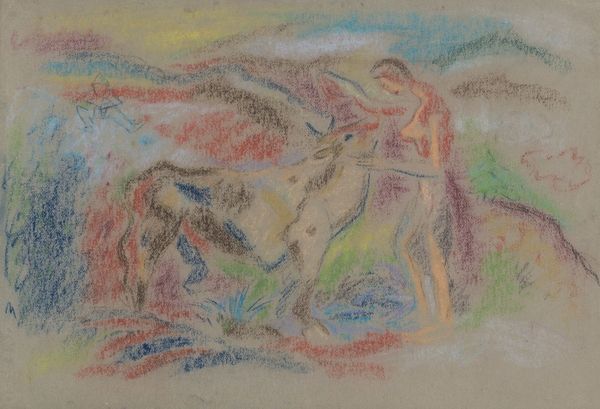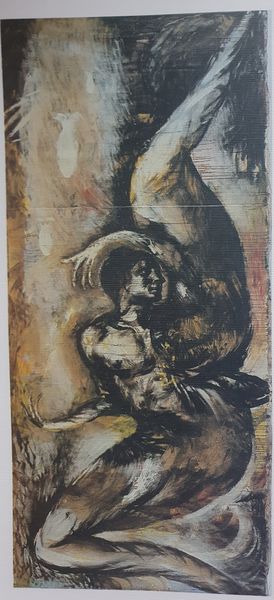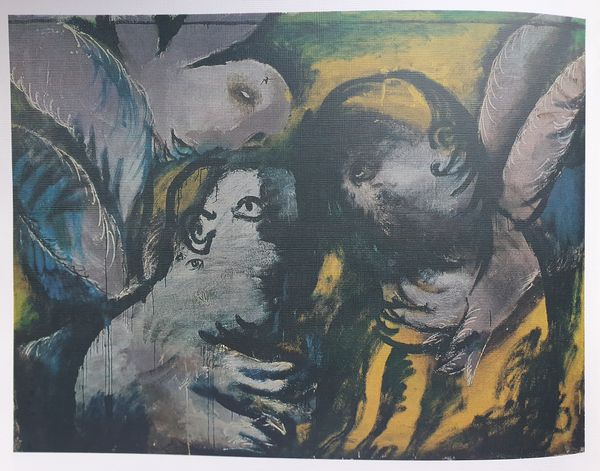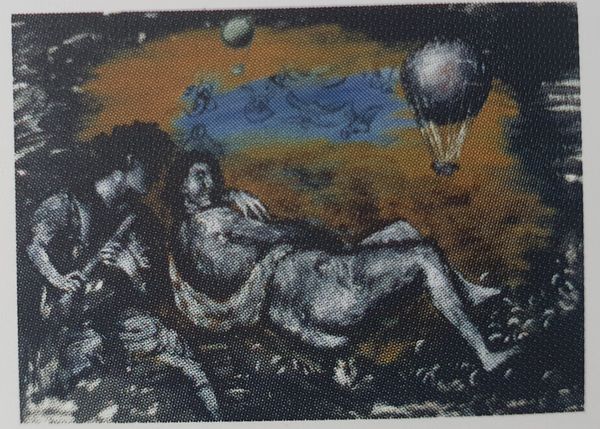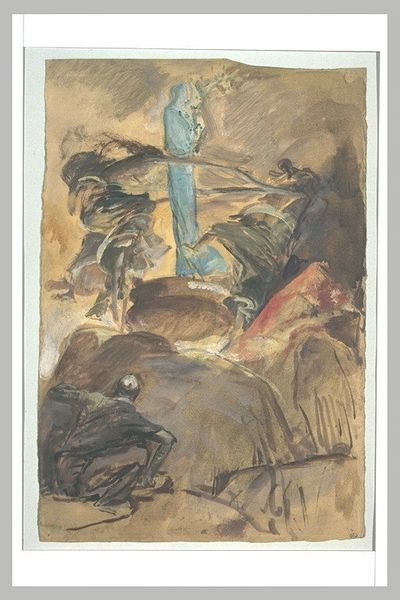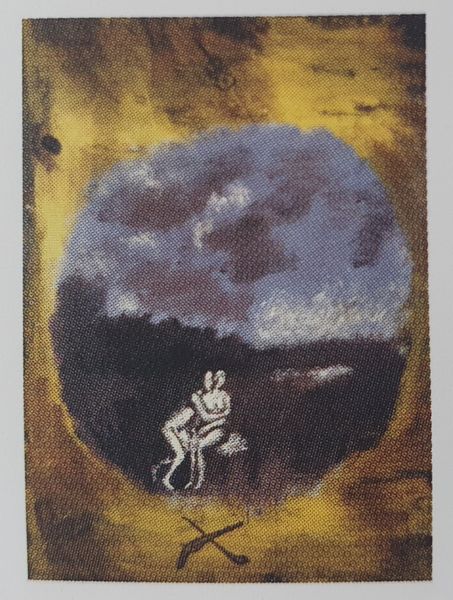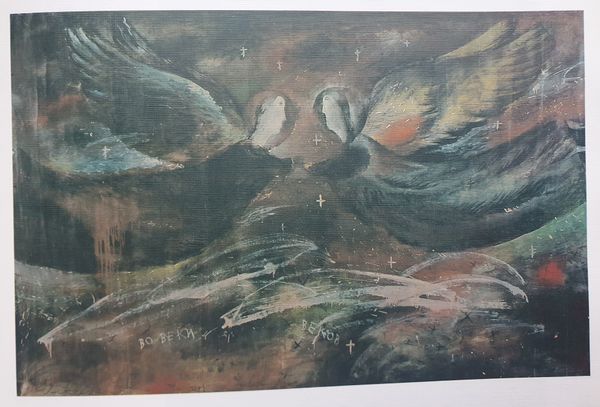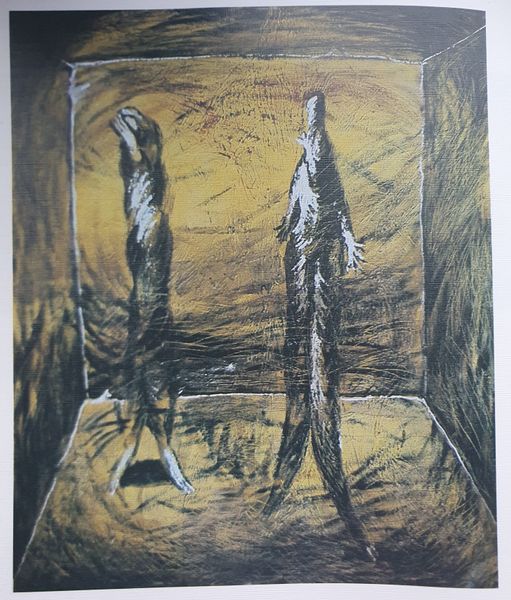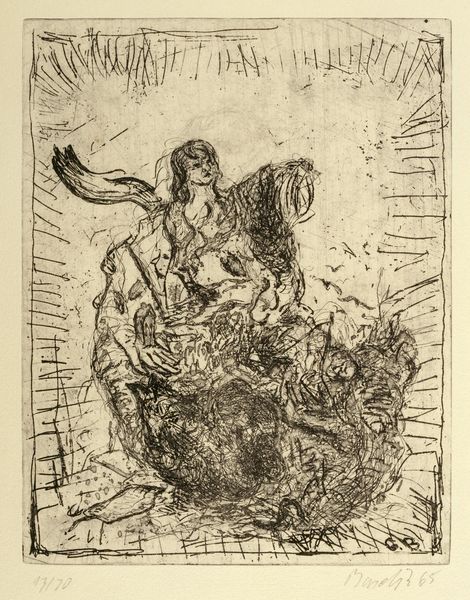
painting, watercolor
#
water colours
#
painting
#
landscape
#
figuration
#
watercolor
#
watercolor
Dimensions: 200 x 300 cm
Copyright: Oleg Holosiy,Fair Use
Curator: At first glance, this watercolor piece evokes a primitive and unsettling landscape. The earthy tones are almost monochromatic, giving a very somber mood. Editor: Indeed. Let's delve into Oleg Holosiy's "Kolybelnaya Synu," which translates to "Lullaby to the Son," completed in 1988. The piece is executed on, well, it's hard to say exactly, likely canvas or heavy paper, employing watercolor techniques. The initial impression suggests a scene laden with mythological weight, doesn't it? Curator: Absolutely. I immediately think of archaic shamanic rituals. The central figure playing what seems to be a flute evokes the classic image of the shaman. We see them connected with animal spirits in a very interesting composition. What kind of historical context can shed light on this? Editor: Holosiy created this in the late 1980s in Ukraine, during the waning years of the Soviet Union. We can interpret this through a lens of cultural anxiety, maybe longing for identity, rooted in folklore. The lullaby suggests care, protection, but is rendered here within a barren or, at best, liminal space. The act of playing the flute, or a similar pipe instrument, signifies storytelling and passing down wisdom through generations. Holosiy's symbolism goes further, too, perhaps expressing some fragility for this tradition, looking at this wounded animal to the left. Curator: Right. And note the creature—possibly a bear or perhaps a bison, considering its cultural context. In many indigenous traditions, this creature symbolizes strength, resilience, connection with earth. Yet here, the figure is hunched, seeming almost injured or mourning. There is this blue accent color on that animal spirit to the left too... a glimmer of hope? Editor: Perhaps. It might suggest a yearning for a reconnection to cultural and environmental roots that have been fractured or suppressed under political power. I see this almost like the end of a historical movement. There is definitely a somber, melancholic sense for cultural continuity being carried in a moment of oppression. The muted watercolors underscore the state of decay and hope coexisting at once. Curator: And those slender figures resembling elephant legs, clustered around the central figure—they strike me as enigmatic guardians, or perhaps remnants of another, more ancient narrative. They aren't as visible but that makes their presence that much stronger to me. I would love to spend hours unpacking the specific cultural mythologies feeding Holosiy's imagination. Editor: It gives a fresh, symbolic potency to the legacy and cultural context it was developed inside of. "Kolybelnaya Synu" becomes more than just an aesthetic tableau, becoming a social-political reflection of a cultural heritage being in some state of grief but yet is also trying to transcend beyond such events. A fitting reminder, as our own contexts keep demanding the same from contemporary society. Curator: I agree. It's amazing how one piece of art, initially simple, may resonate as an allegory of great historic relevance.
Comments
No comments
Be the first to comment and join the conversation on the ultimate creative platform.


